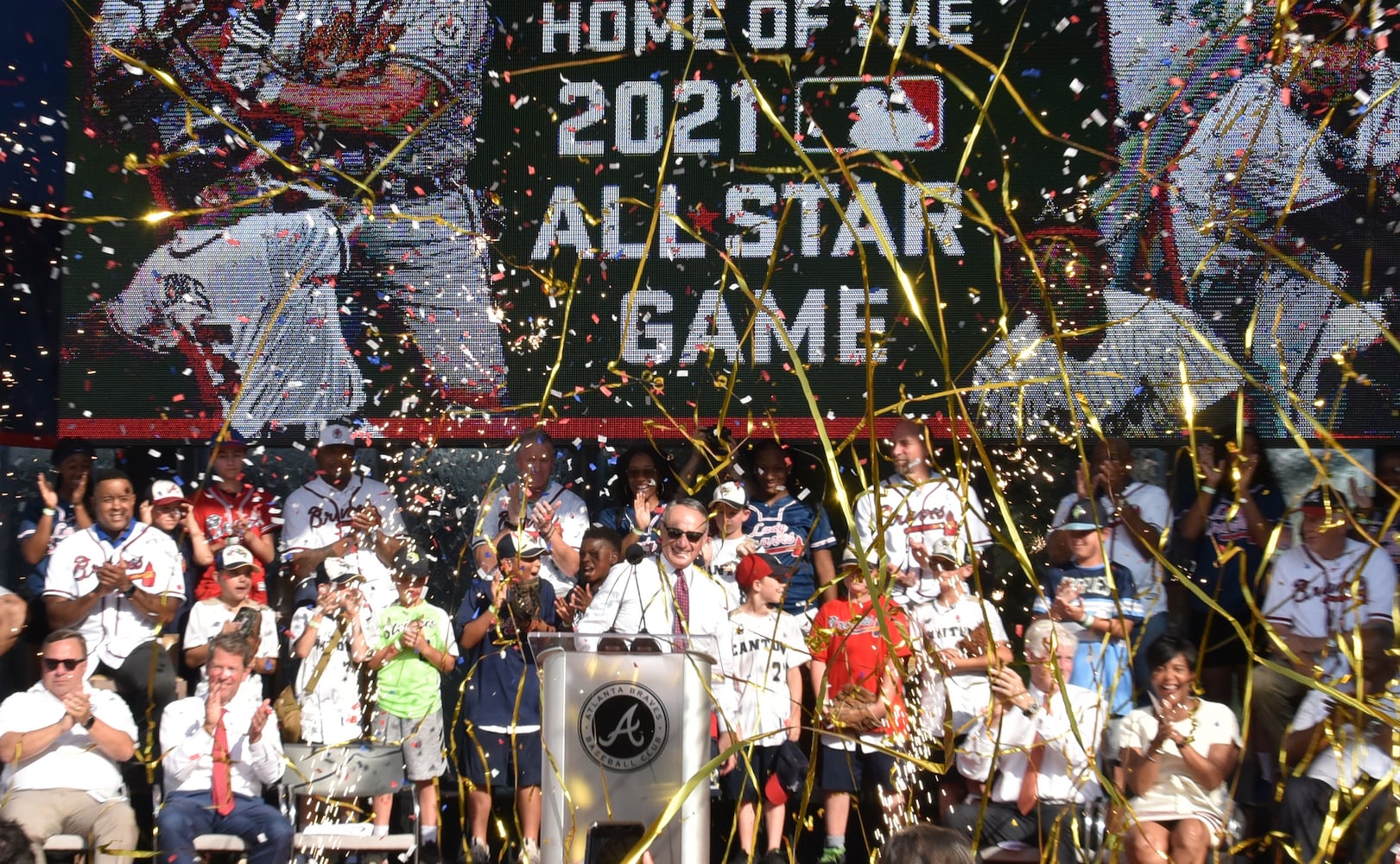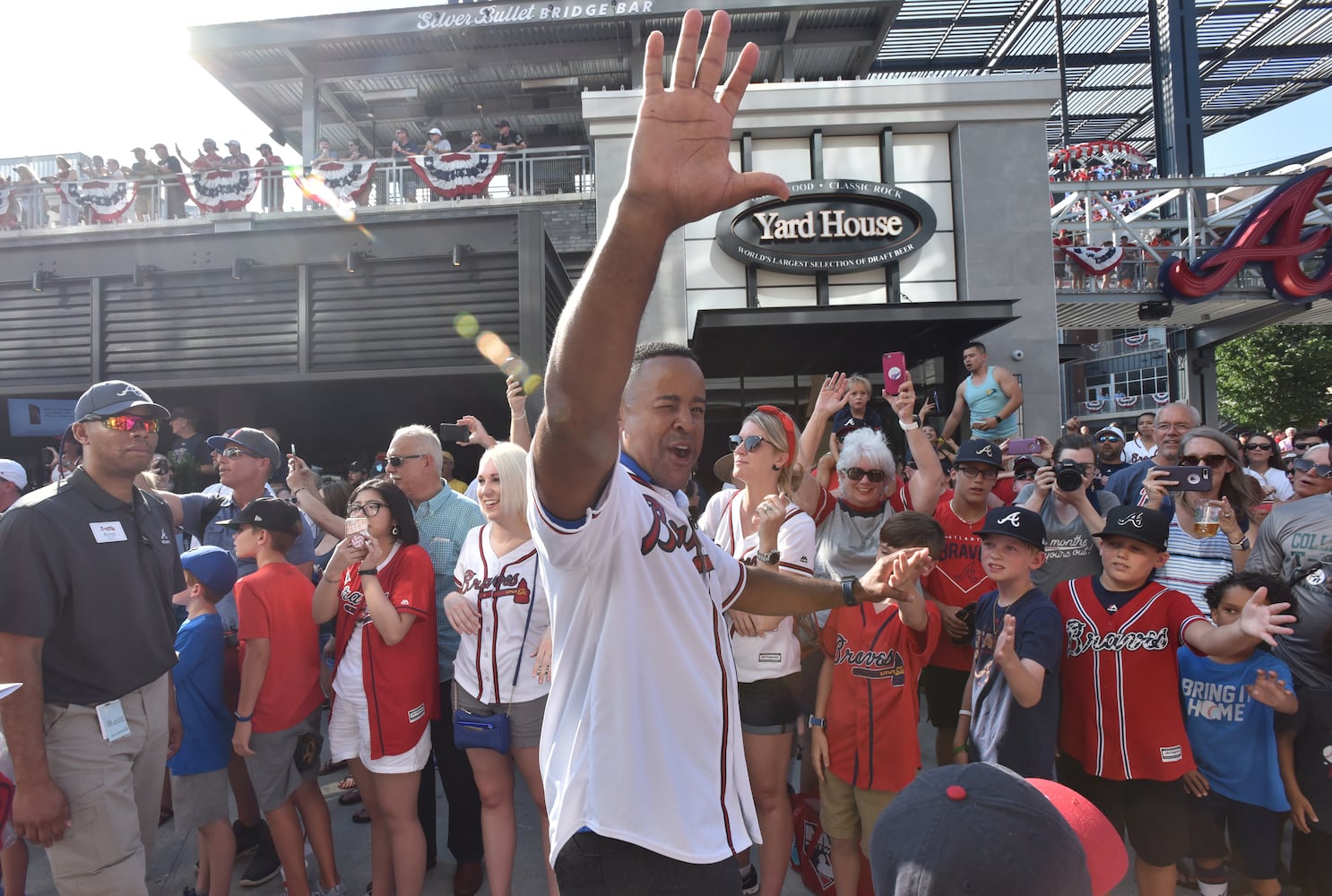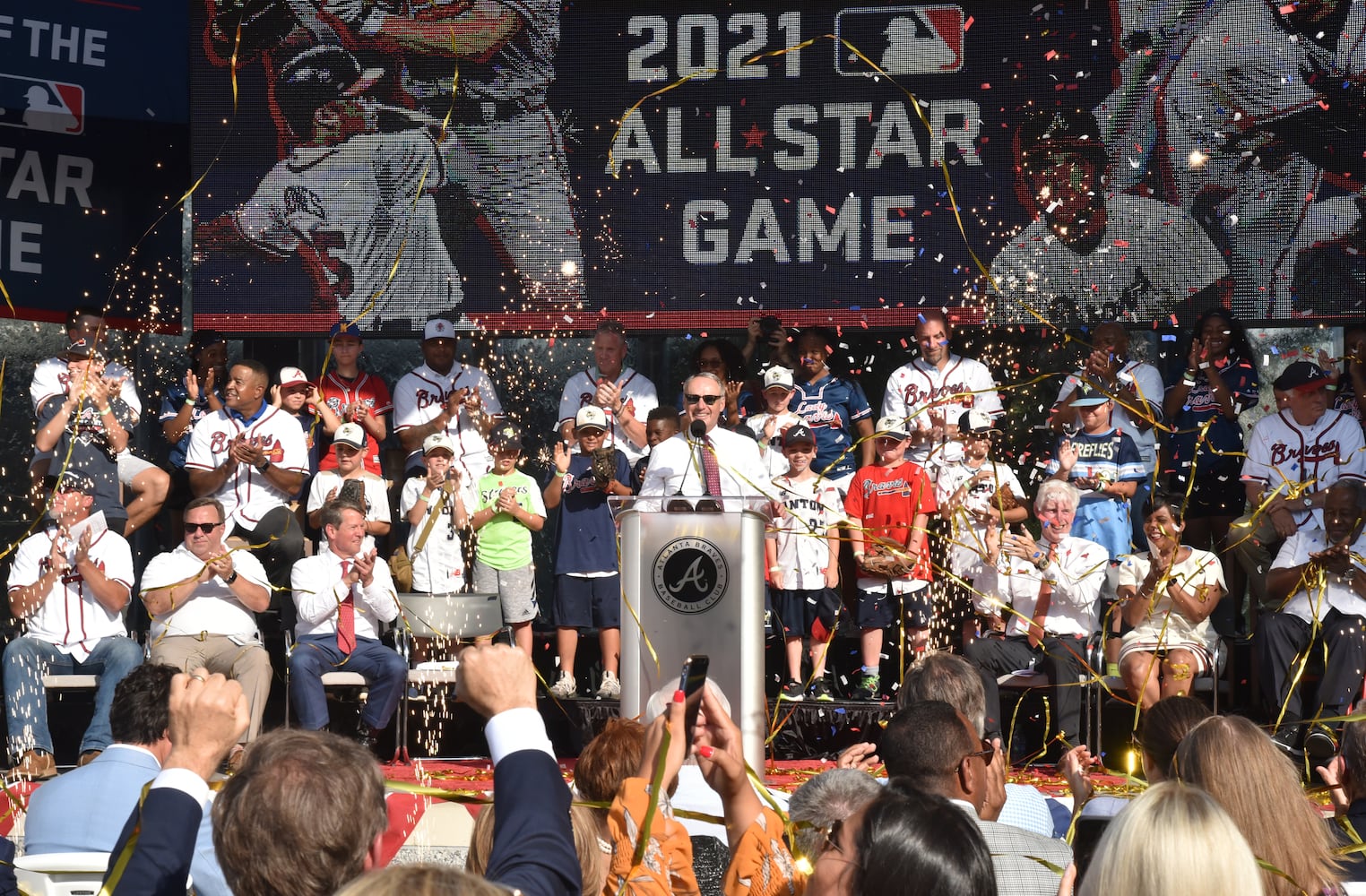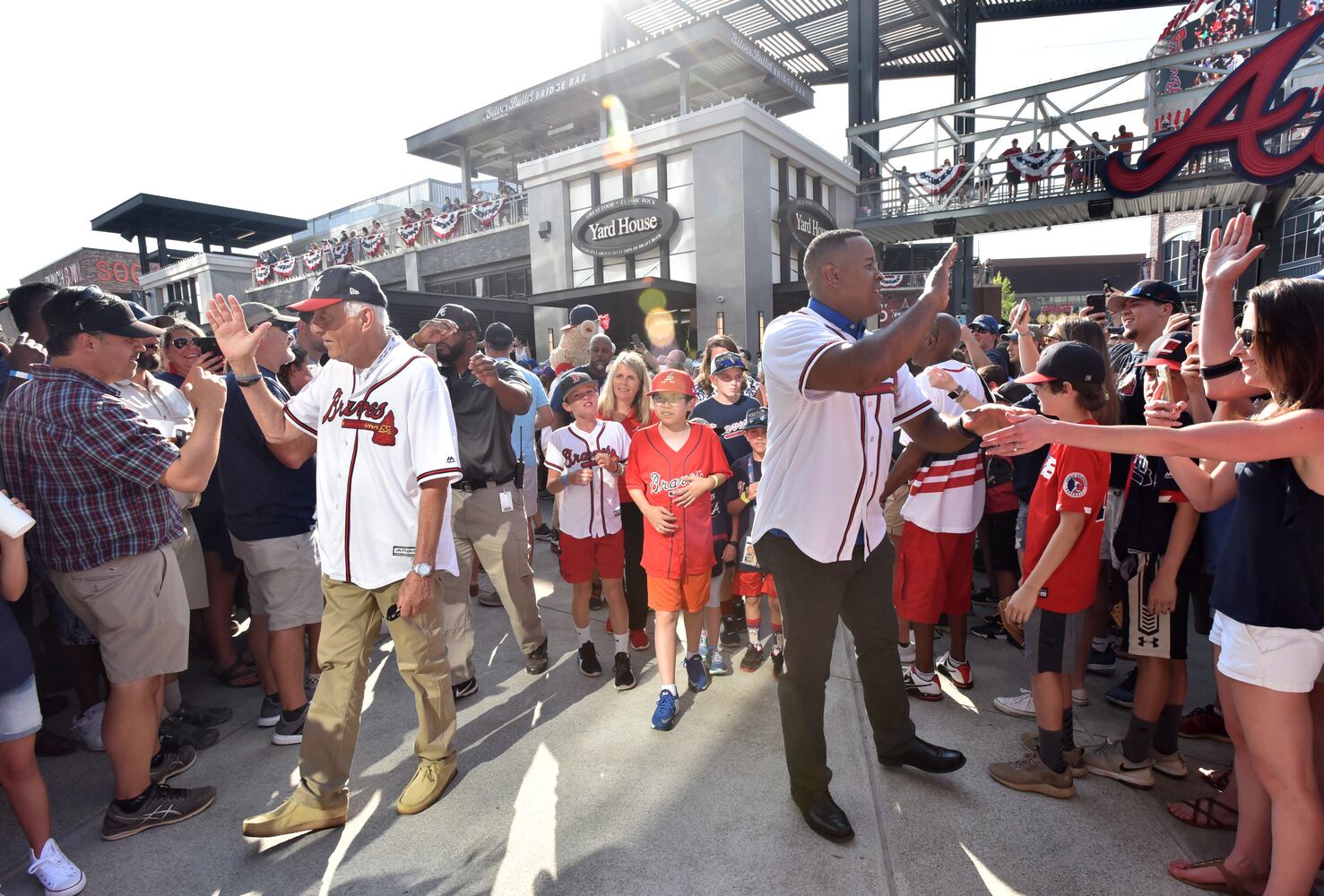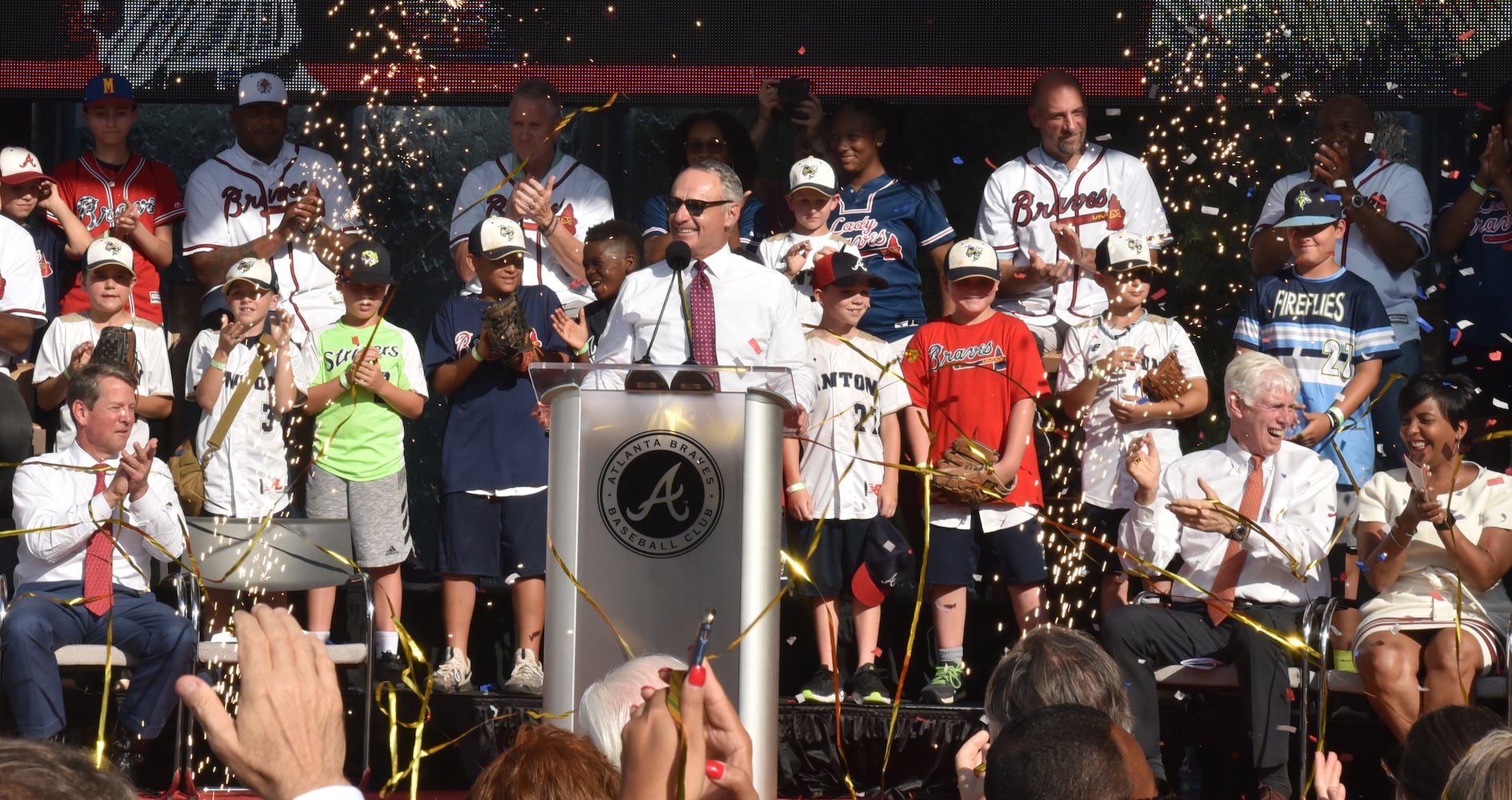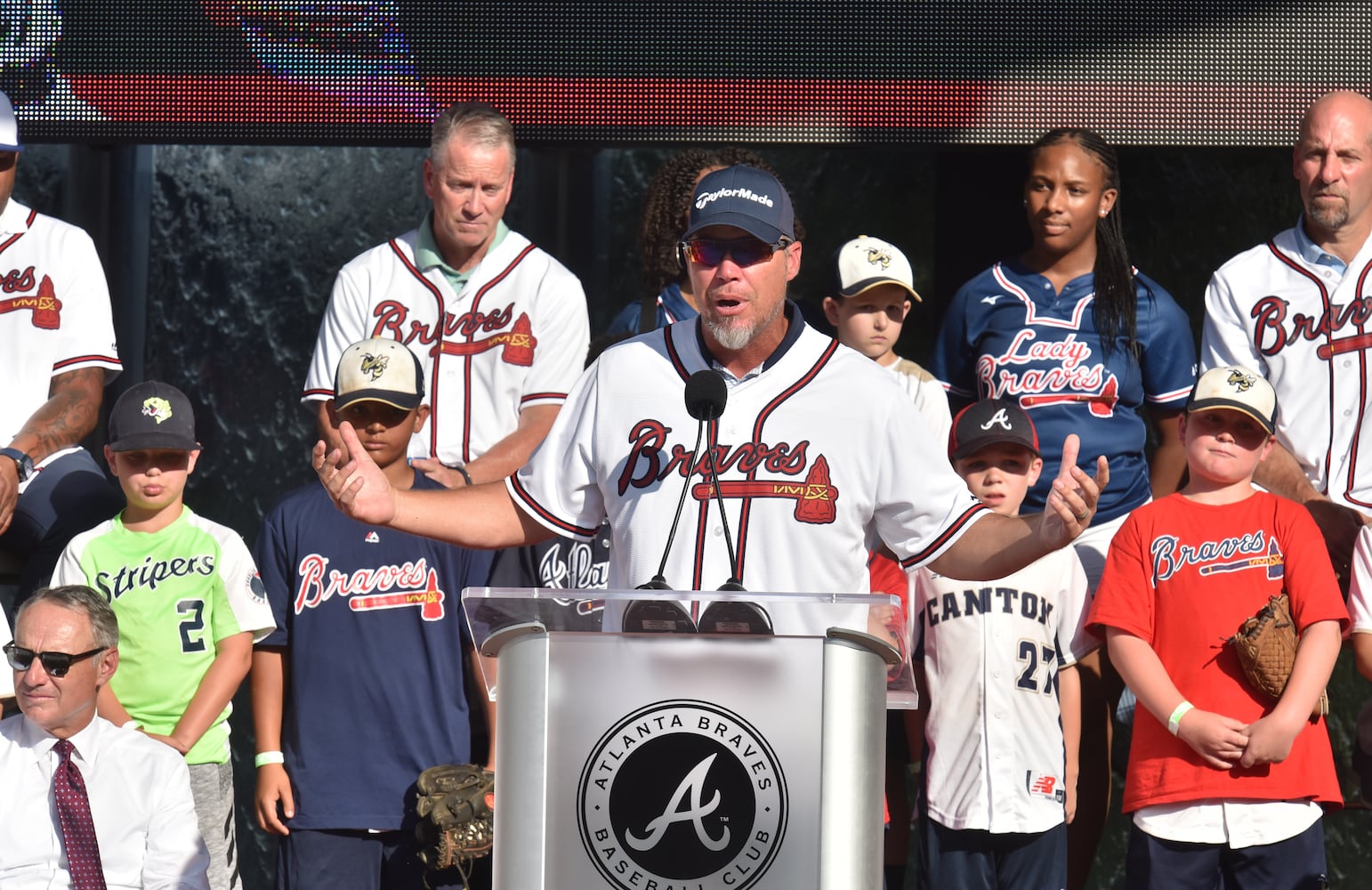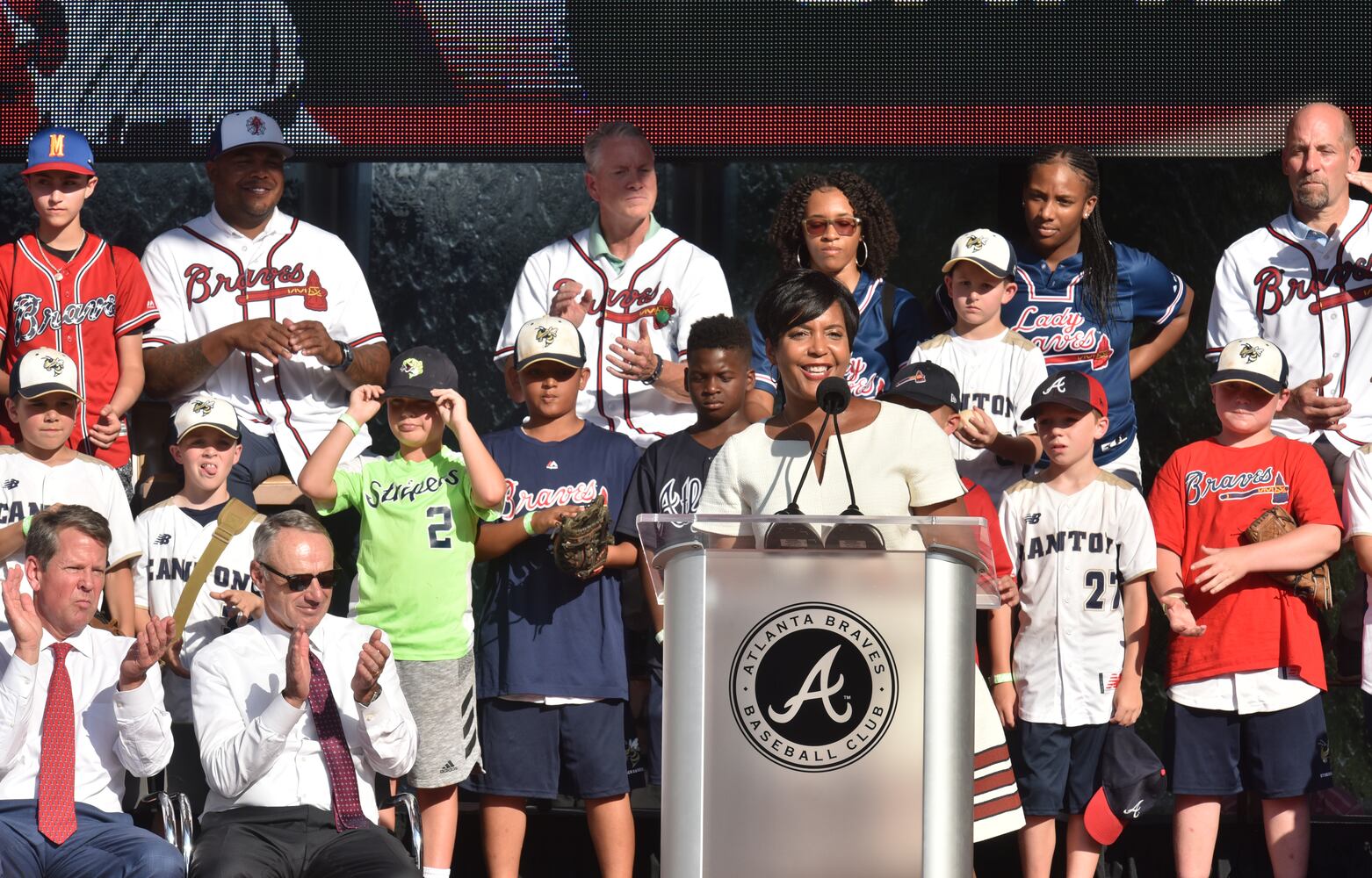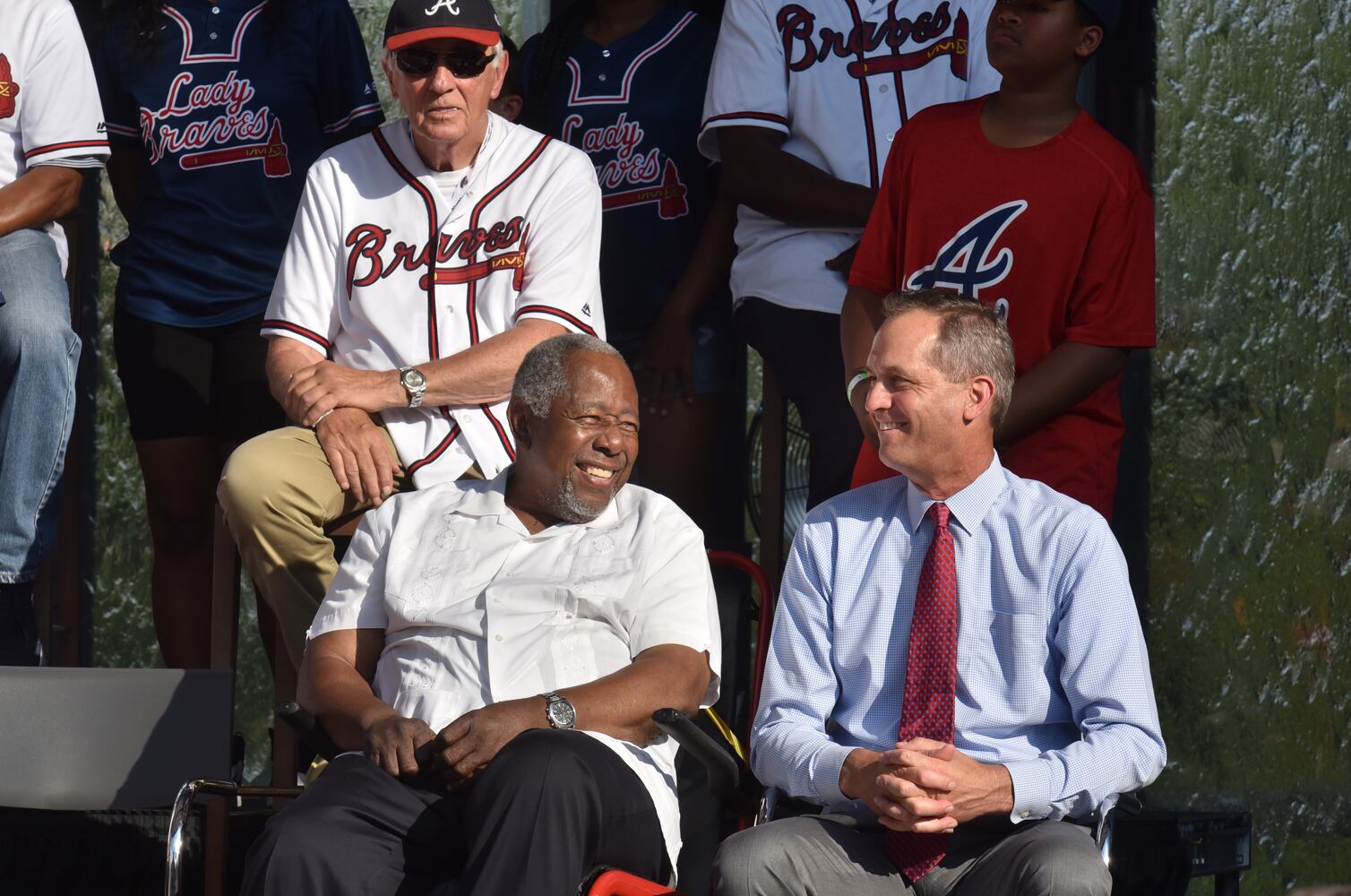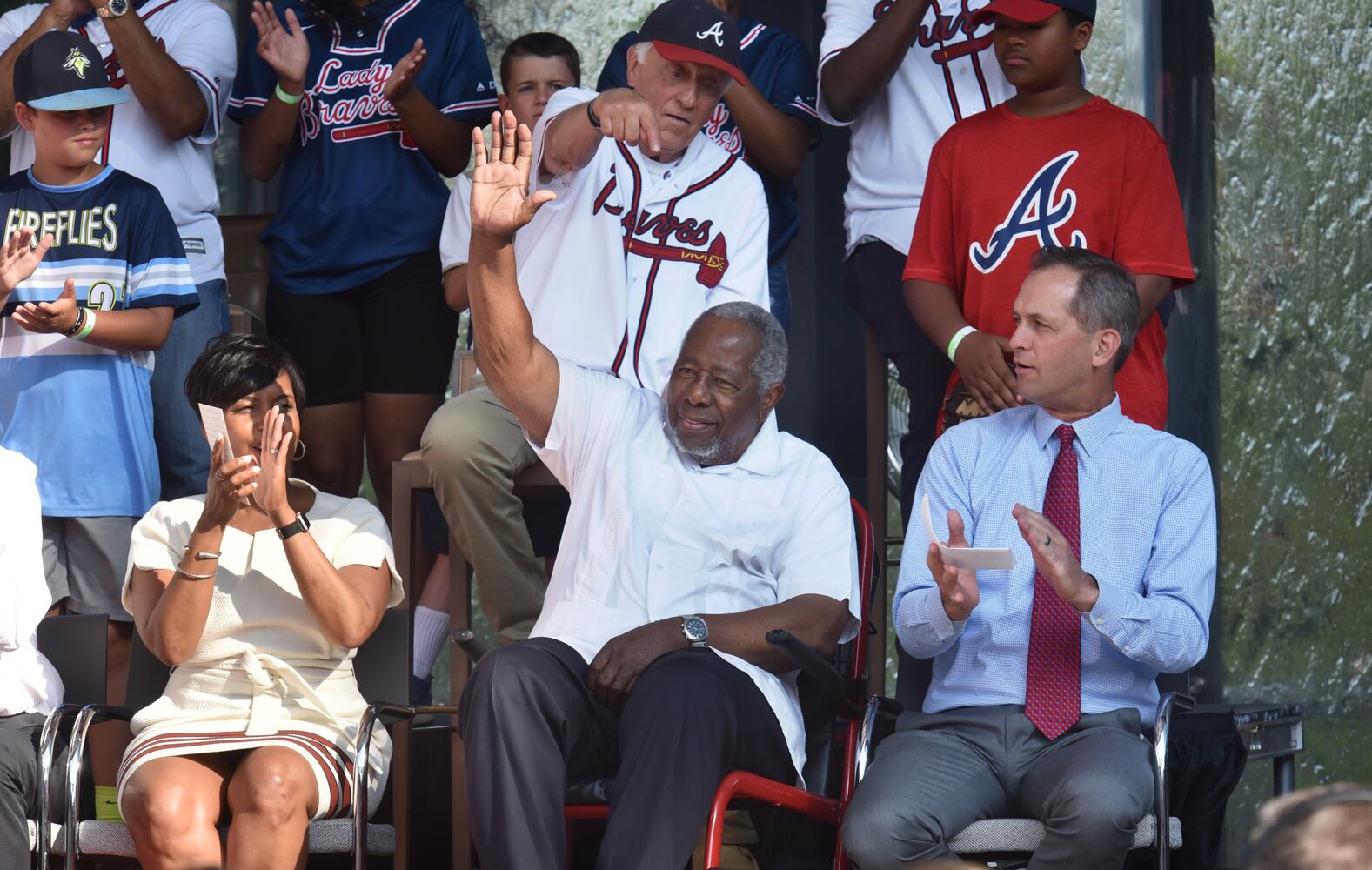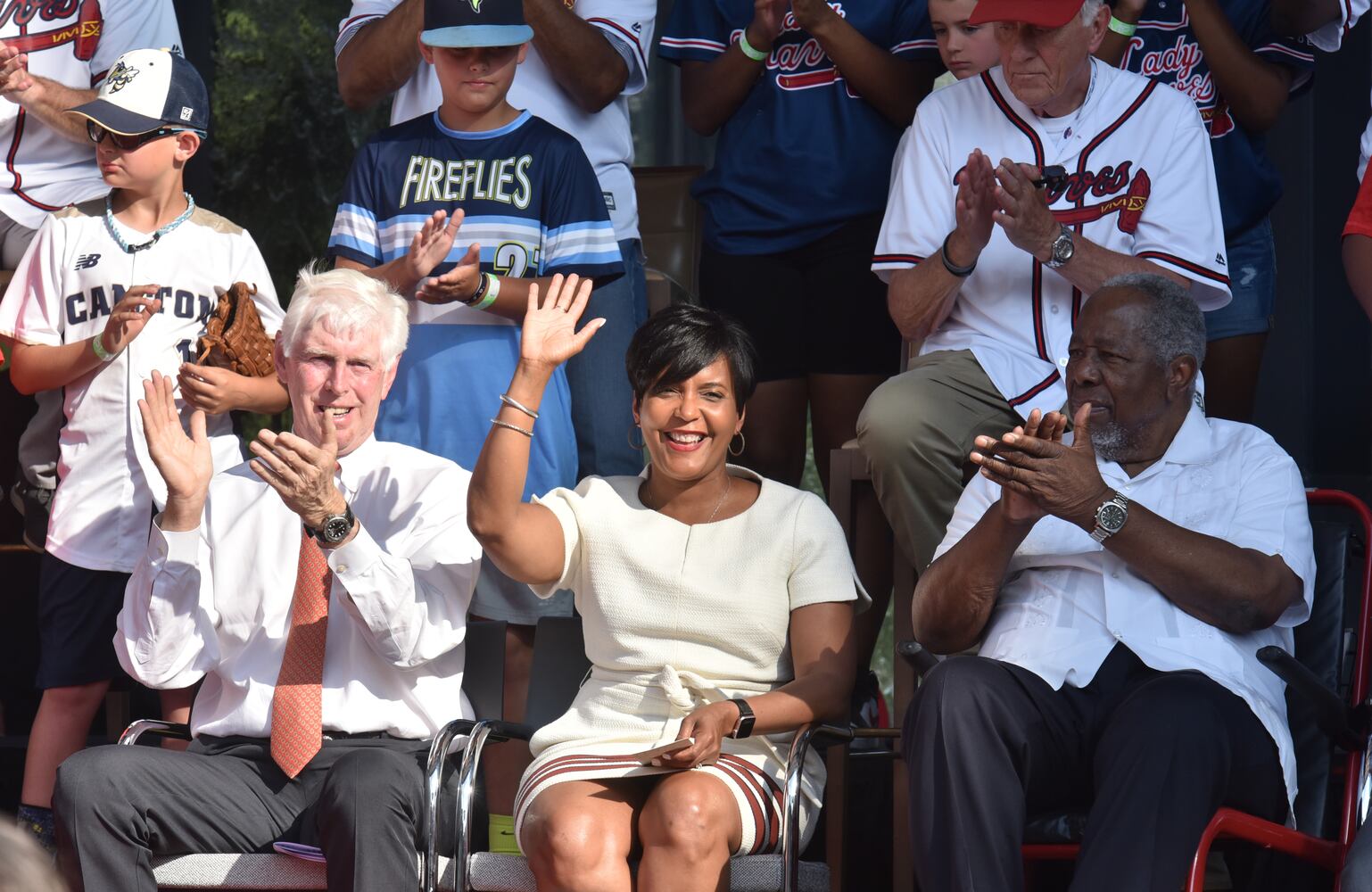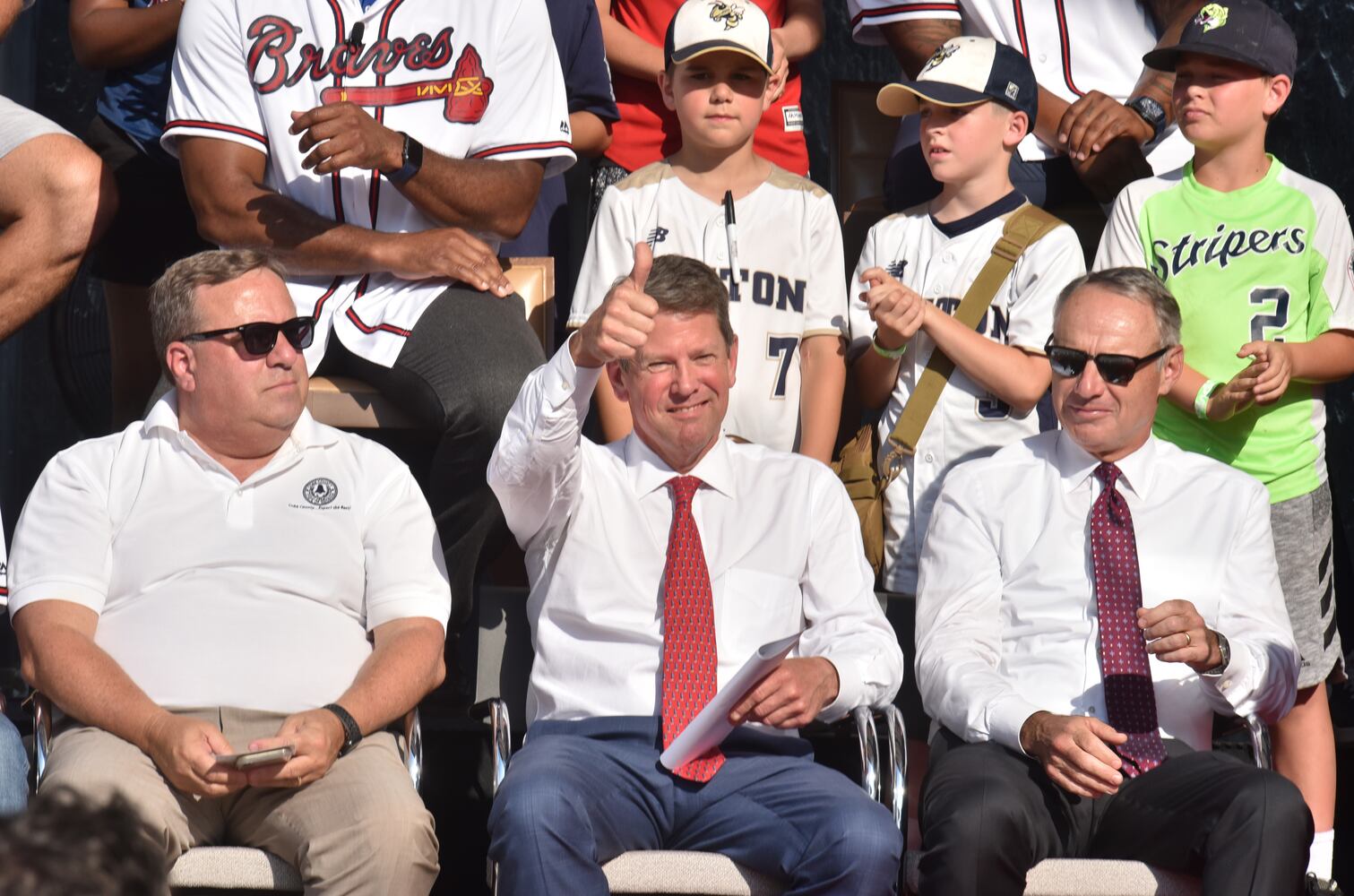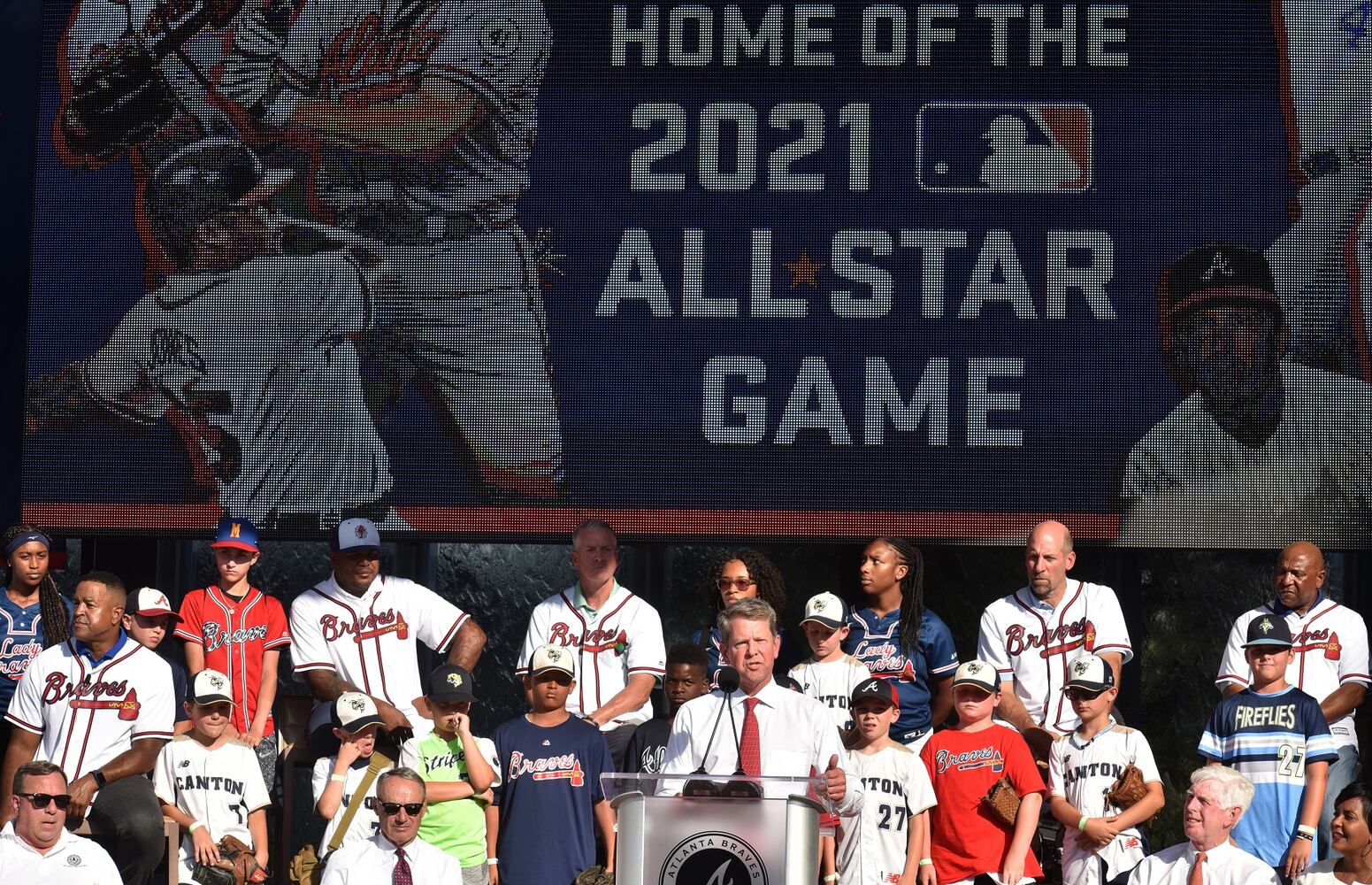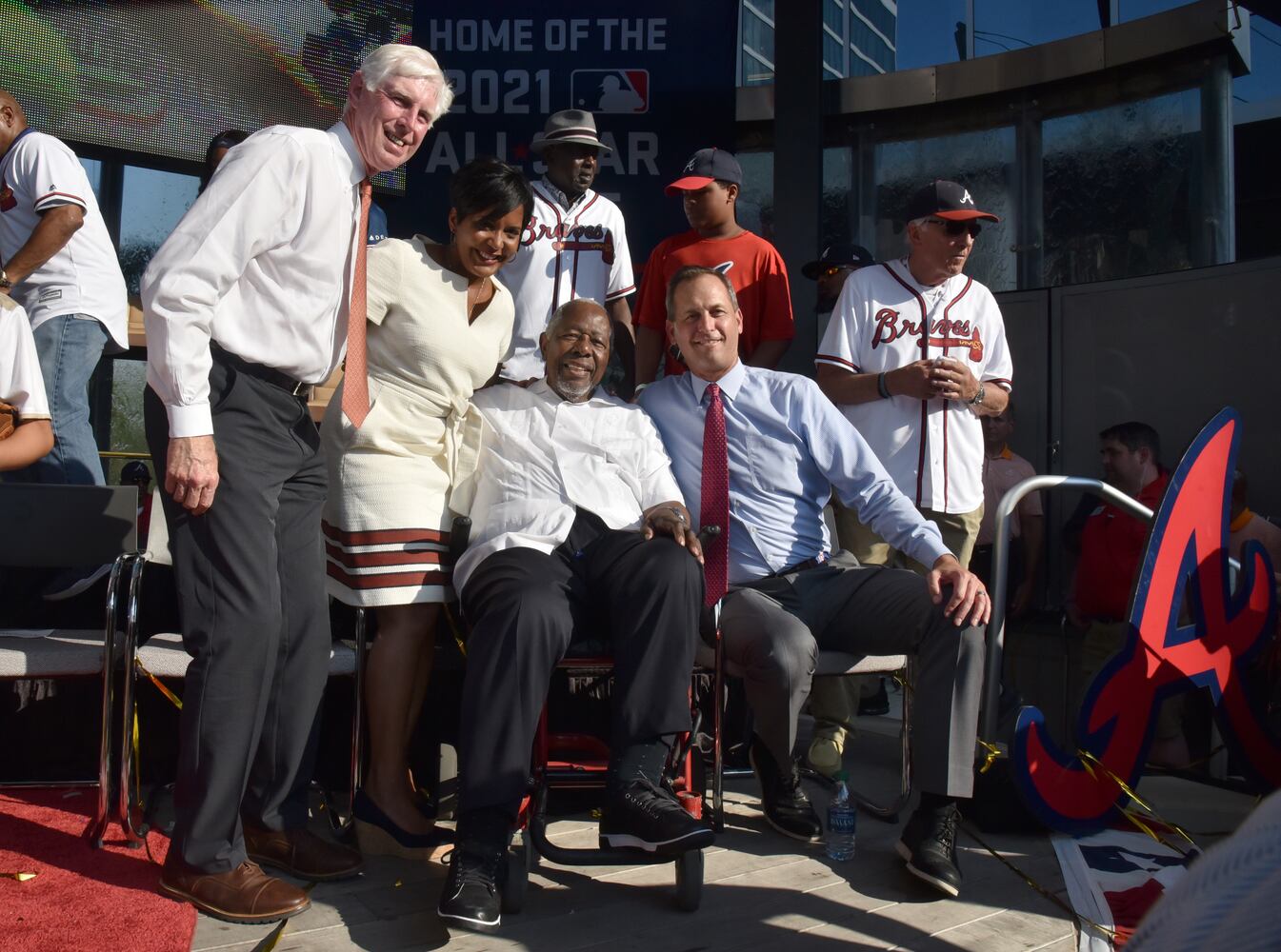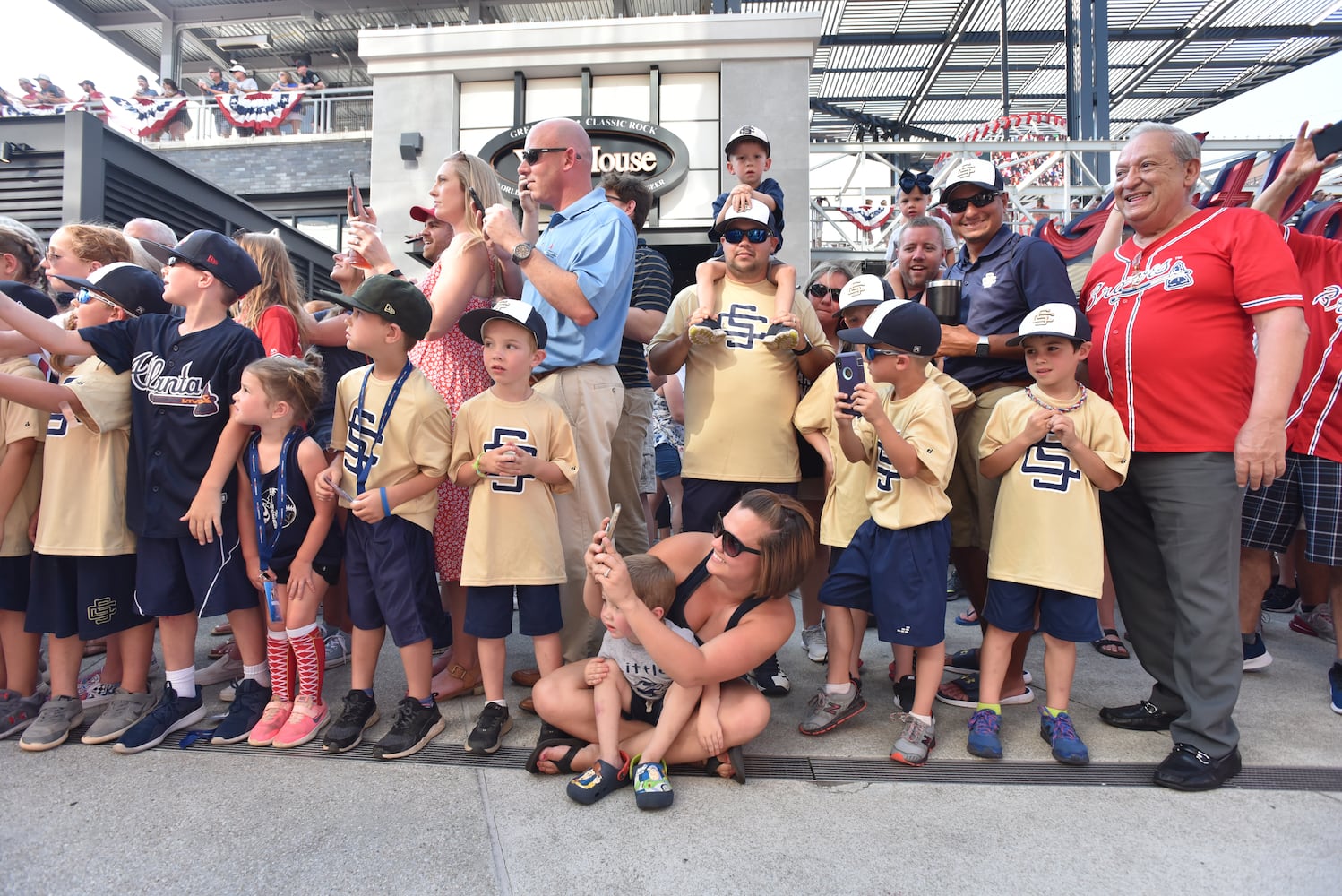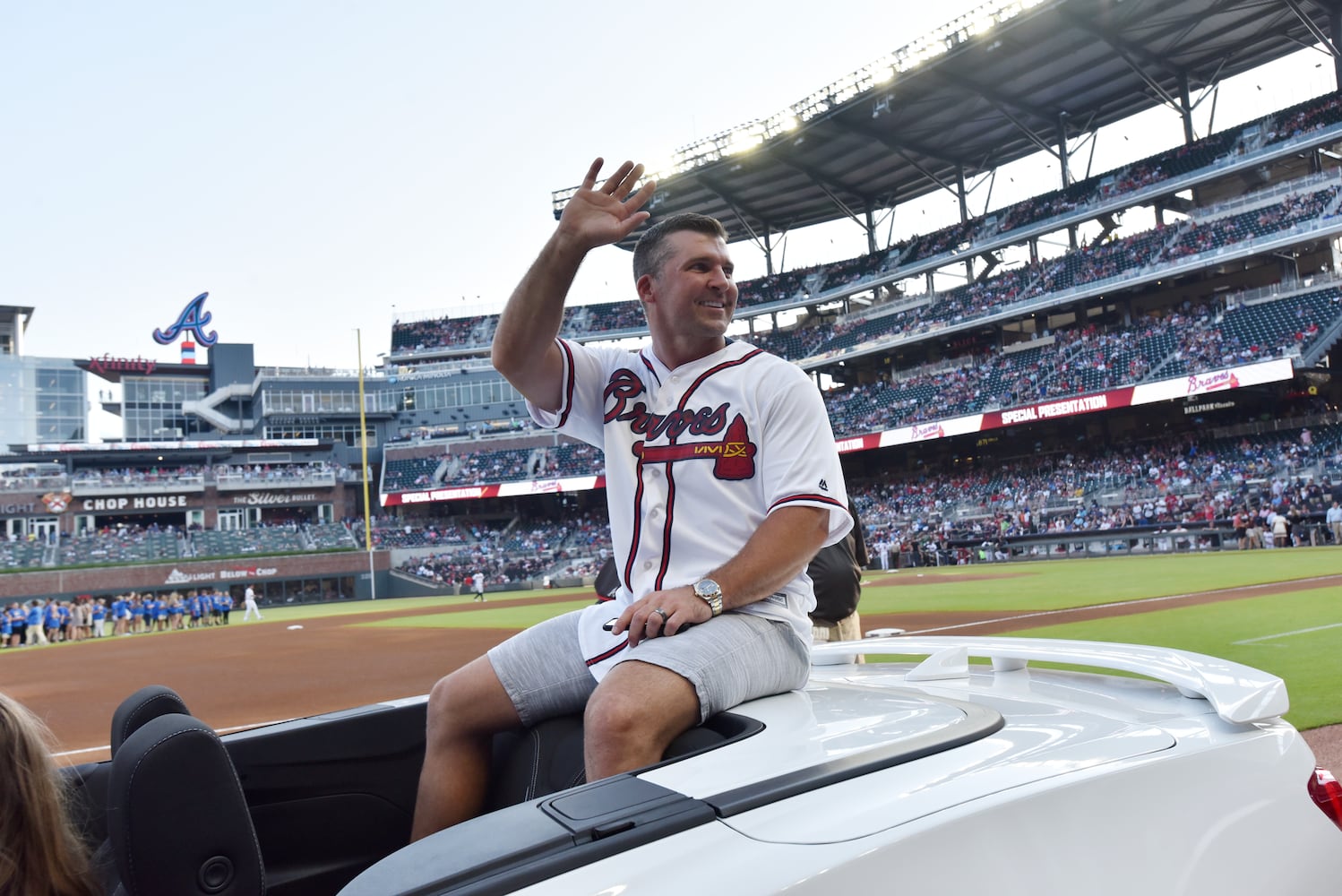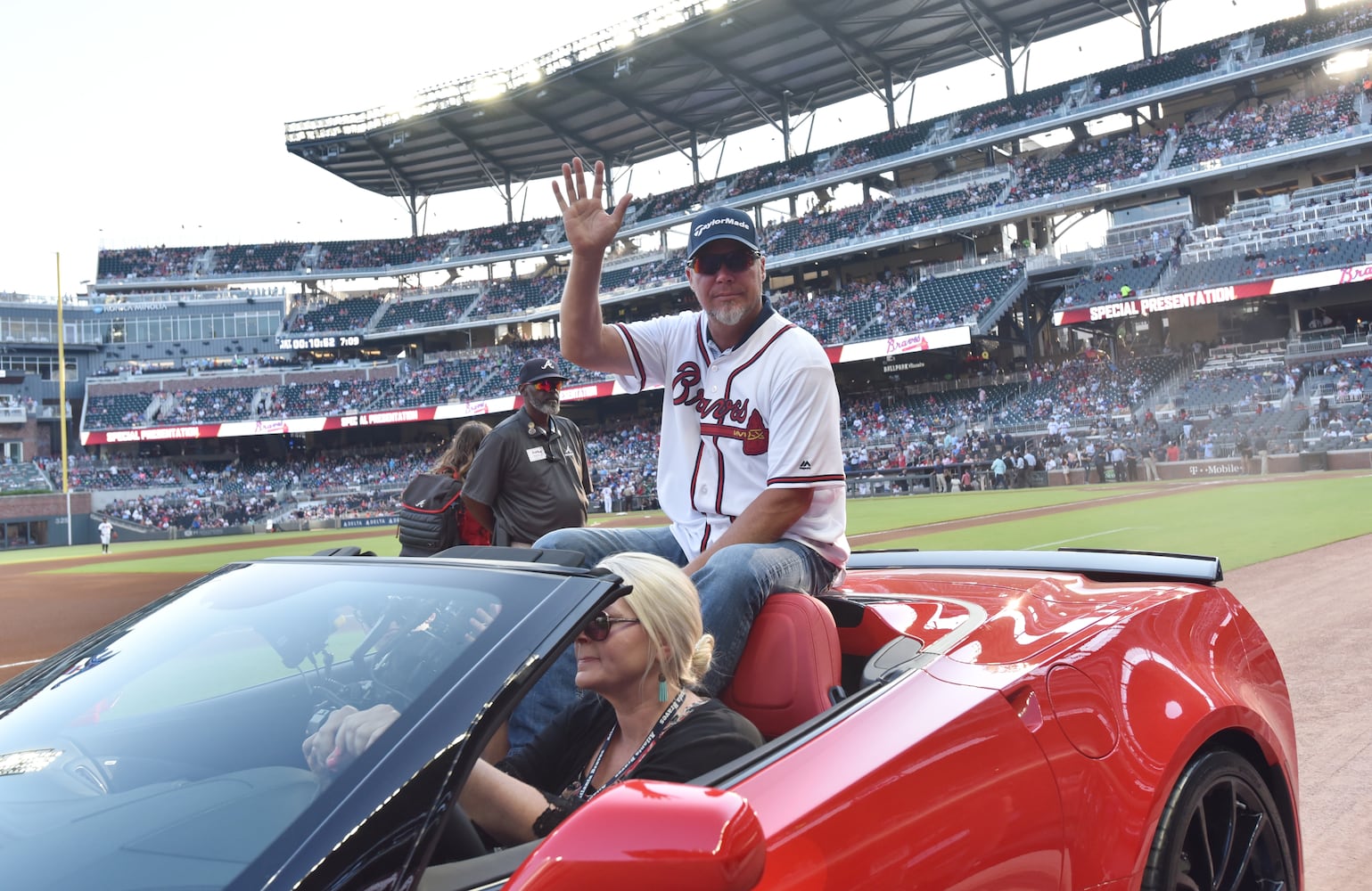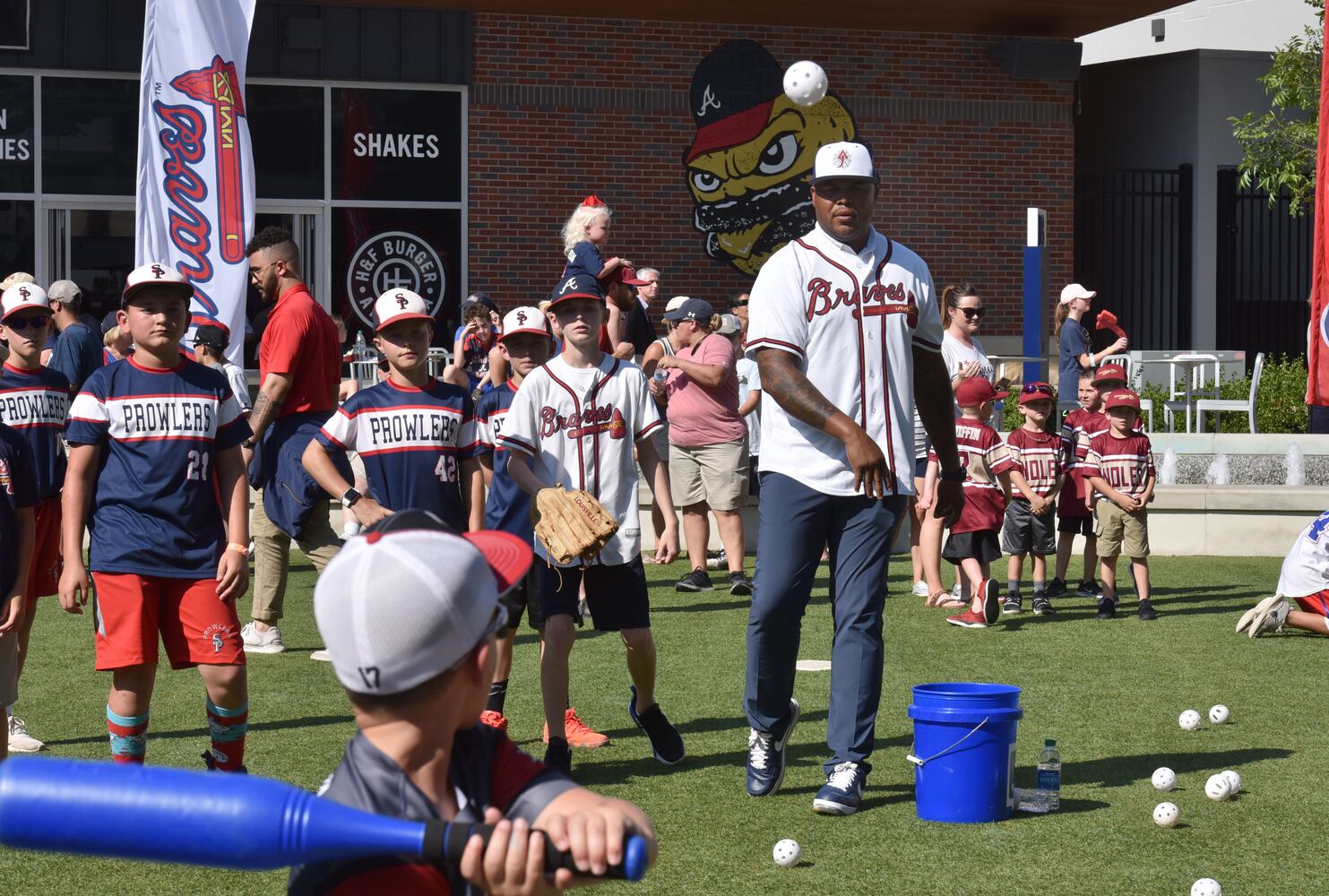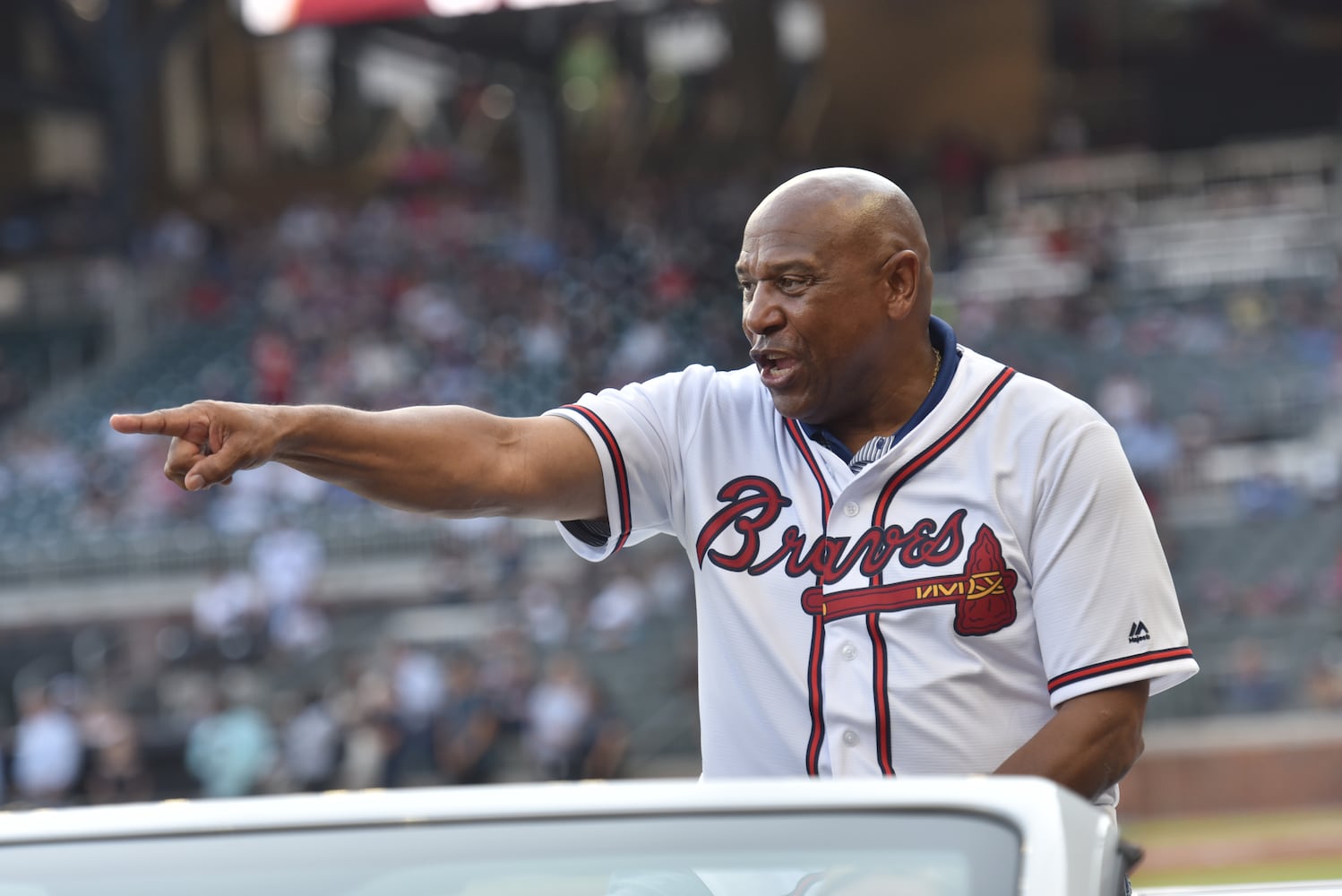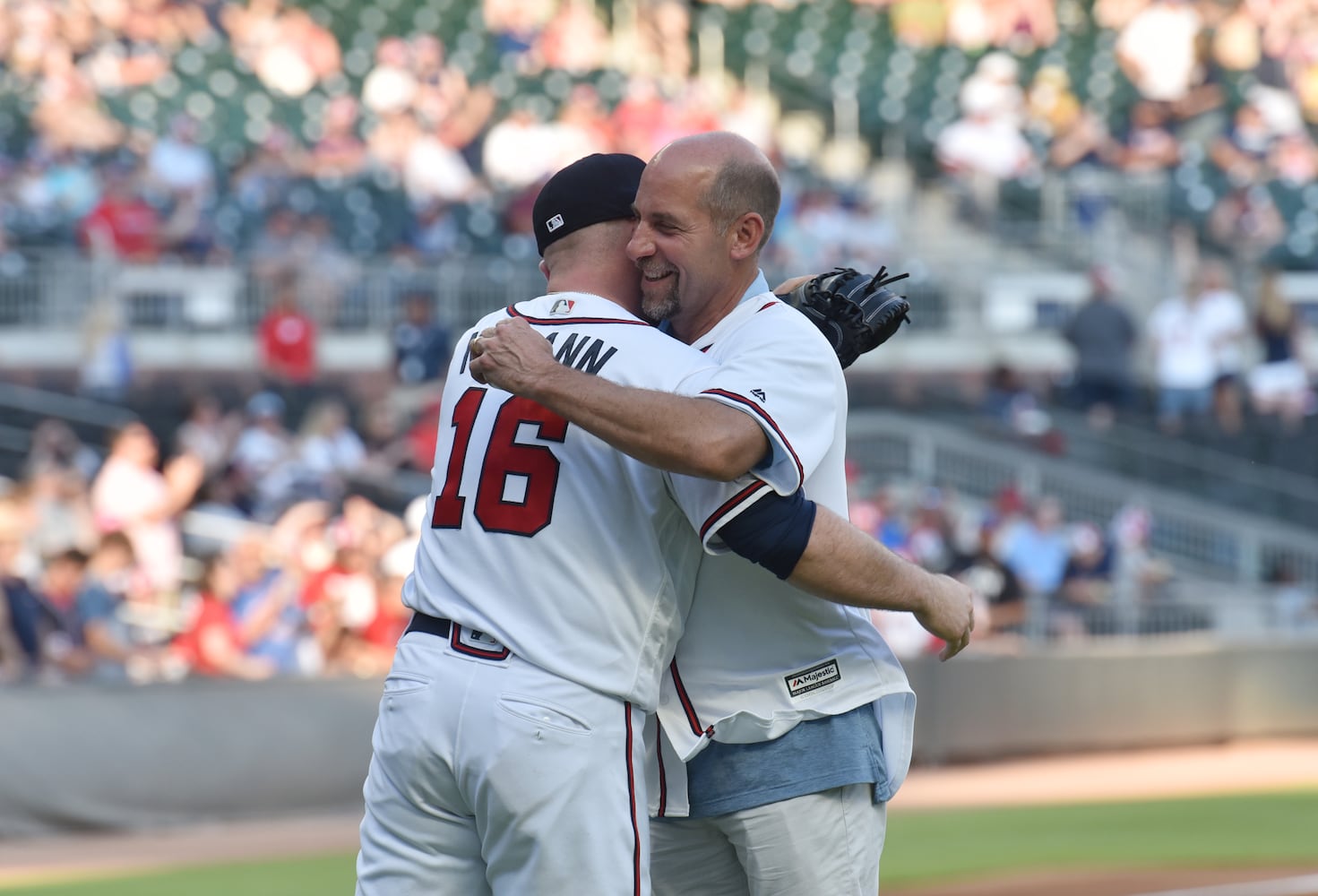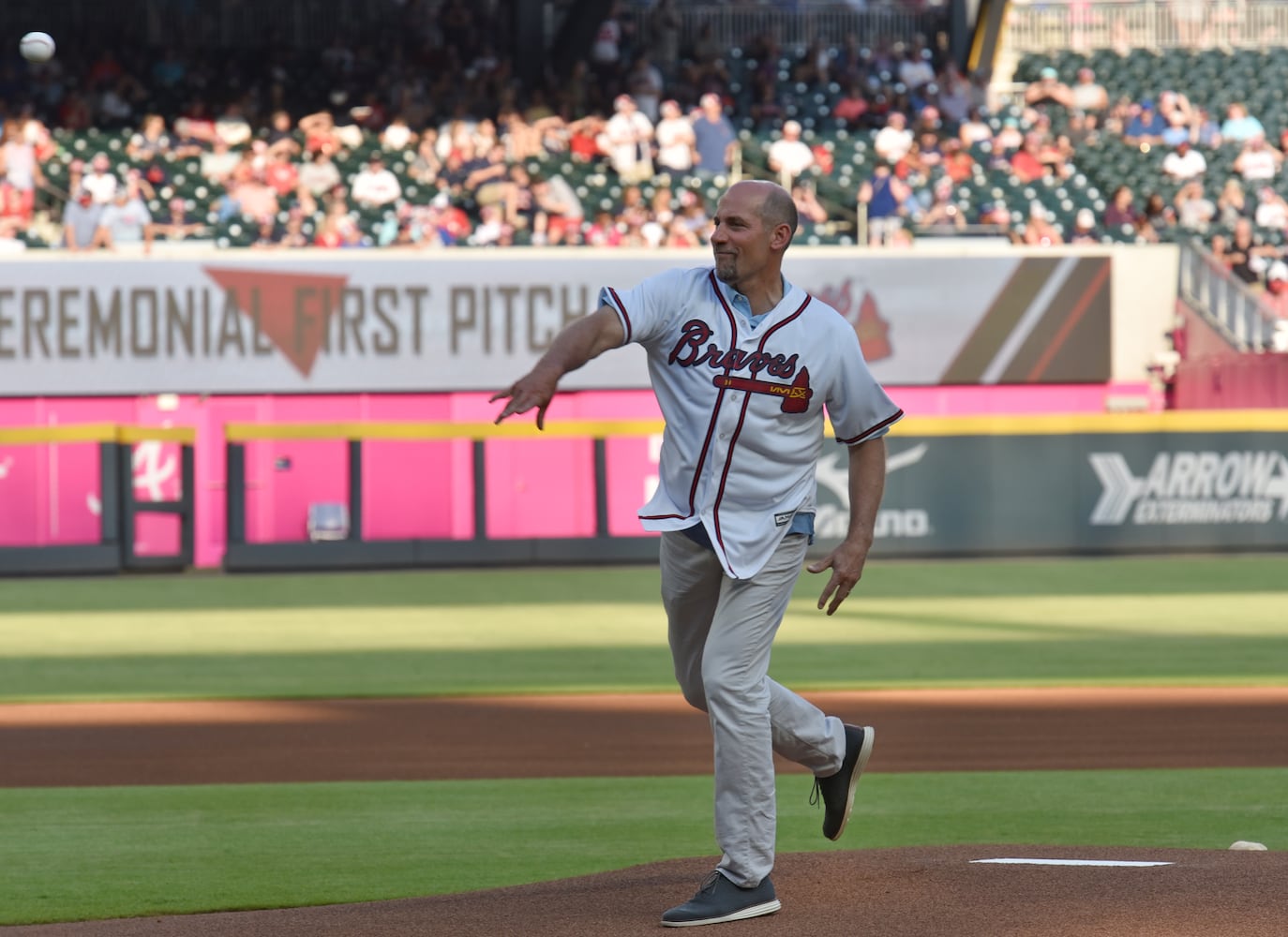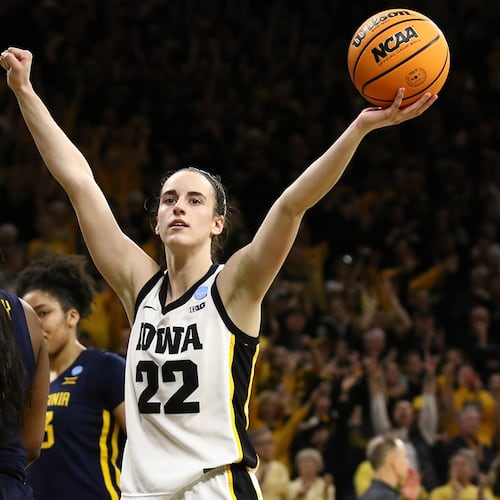We spent Wednesday hearing bigwigs — MLB commissioner, Georgia governor, Atlanta mayor, Atlanta Braves brass — offer encomiums to SunTrust Park and the attached Battery. Then, the 2021 All-Star Game having been officially handed over, Game No. 56 of the 2019 regular season commenced. After 4-1/2 innings, the home side trailed by two scores, meaning two touchdowns plus PATs.
The visiting Nationals scored four runs in the first, four in the second, none in the third, one in the fourth and five in the fifth. It was 14-0. It would end 14-4. A team coming off another strong road trip came home as the Braves often do, which is to say they stunk out STP. (What the heck is up with Kevin Gausman?) This, it must be said, isn’t a trifle. It’s a big deal.
The Braves are 14-14 at SunTrust. Of the 14 MLB teams holding winning records, 12 have winning records at home. (The other exception is San Diego, also 14-14.) Nor is this a recent development. The Braves were 43-38 at SunTrust last season; that was the worst home record among the 10 playoff qualifiers. Of the Braves’ 14 home losses, three have come by nine or more runs.
This team prides itself for being good on the road, which it was last season — the Braves and the Dodgers led the National League in road victories with 47 — and is again. But a team that can win in somebody else’s ballpark should be a little better than this when it has the last at-bat, don’t you think?
Obvious answer: Why aren’t the Braves better in Cobb? One possible answer: home runs. The Braves have hit 41 homers in 28 home games here; their opponents have hit 40. In 28 road games, the Braves have hit 35 home runs to their opponents’ 30. A year ago, the Braves’ ERA was 3.50 on the road, 3.97 at home. This year’s home ERA is 4.55; the road ERA is 4.00.
SunTrust Park is playing smaller this year. According to ESPN's MLB Park Factors table, it's seventh in home runs generated — one spot behind Cincinnati's Great American Bandbox, one ahead of altitude-affected Coors Field. A year ago, STP was only 27th; in 2017, the stadium's inaugural season, it was 19th.
The Braves have done a fine job in accumulating young pitchers, but they haven’t exactly tailored their staff to these environs. (Hey, Rome wasn’t built in three years.) Mike Soroka throws a heavy sinker — a “bowling ball,” to quote Chipper Jones. So does reliever Luke Jackson. Max Fried gets groundballs off breaking pitches. And that’s about it.
The league average on groundballs to flyballs is 0.80. Jackson, Soroka and Fried are way better than that. Gausman, Julio Teheran and Mike Foltynewicz — 60 percent of the rotation, as constituted – are worse. Teheran has started eight road games to four at STP, yet he has yielded the same number of homers (four) home and away. Foltynewicz has faced nearly twice as many batters at home as on the road, having been touched for four times as many homers (eight against two) here.
The more flyballs you induce, the greater the chance they’ll go over the fence. Ask a bunch of flyball pitchers to work half their games in a stadium that plays small, and the risk increases. The Braves hit more homers at home than they do on the road, but their opponents hit more at STP than when they’re facing the Braves in their respective domiciles. A small-playing park lifts all boats, or something like that.
Oh, and it doesn’t help when your bullpen is terrible. But you knew that already.
There’s also this: The Braves are 7-8 against the NL East, 2-7 against division brethren other than Miami. Last year they were 49-27 versus the East, which was the reason they won the thing. This year’s schedule was weirdly front-loaded with non-division games, but that will eventually change. The Braves haven’t gone to Nationals Park or Citi Field; the Phillies haven’t yet graced STP.
Philadelphia is set to arrive at the end of next week. It has padded its lead to 3-1/2 games while the Braves were losing the past two nights. Braves fans seem to like SunTrust Park; imagine how much more they’d enjoy it if the home team rendered it a fortress.
About the Author
The Latest
Featured
